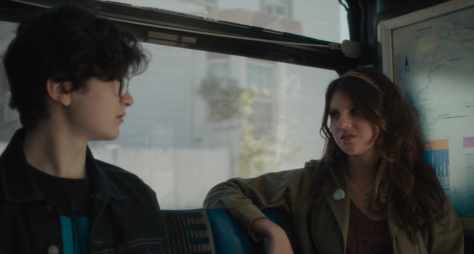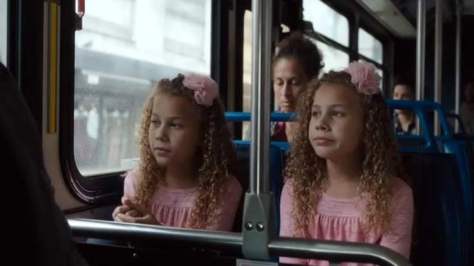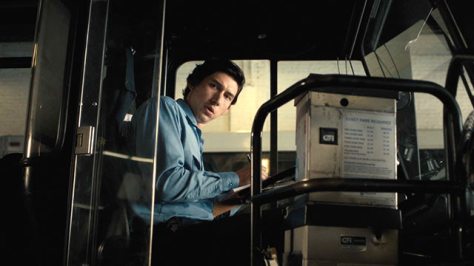Spoiler Warning: As part of our In Focus series, we delve deep into Paterson (2016).
AS a litany of superhero movies, Disney remakes and furious cars reign supreme, it is easy to get swept away by the triviality of modern American cinema.
Then a film like Jim Jarmusch’s Paterson comes along.
Far from the loud bustling of Hollywood, this small-scale masterpiece won audience’s hearts with its gentle, endearing and quietly brilliant approach to storytelling.
Inspired by the work of William Carlos Williams, whose epic poem Paterson (1946-58) lingers in the film’s background, Jarmusch captures the poet’s appreciation for the intricacies of American life.
The film follows a young bus driver and poet, named Paterson (played by the superb Adam Driver). He lives in the New Jersey city of (you guessed it) Paterson, spending his days observing those around him and working on his poetry – inspired by hometown hero Williams.
Paterson lives an ordinary life with girlfriend Laura (played by the delightful Golshifteh Farahani), a charmingly enthusiastic jack of all trades. Completing the household is dumpy dog Marvin.
Like Williams’ poetry, Jarmusch’s film can be enjoyed far beyond its surface of tender humour and charming characters. Each carefully constructed scene has hidden meaning ready to be discovered and appreciated.
“A man is indeed a city, and for the poet there are no ideas but in things.”
– William Carlos Williams, Paterson
In some ways, Jarmusch’s Paterson is a celluloid continuation of Williams’ Paterson. From the outset, the director conjures the poem’s metaphor, of the man as the city, by naming Driver’s character Paterson.
Indeed, Paterson is connected in a way many of us who live in urban areas are not. From the elevated position in his bus driver’s seat, Paterson spends his days noticing the unnoticed. Just like Williams, he finds beauty where others do not have time to look.
Jarmusch reinforces this closeness with the city by fading images together. At one point, the Passaic Falls, Paterson and the Ohio Blue Tip matches all populate the frame. It gives the impression they are all connected, at least floating around in Paterson’s mind, fuelling his poetic vision of the city – and life.
“The past above, the future below
and the present pouring down: the roar,
the roar of the present, a speech–
is, of necessity, my sole concern.”
– William Carlos Williams, Paterson
To mirror the passages of prose in Williams’ Paterson, Jarmusch playfully builds a history of the city with overheard bus conversations.
This begins with two young boys discussing infamous boxer Rubin ‘Hurricane’ Carter, who, in 1966, was wrongfully arrested and convicted for a triple-homicide in a Paterson bar. Later, two students talk about late 19th Century Italian anarchist Gaetano Bresci, who ran a newspaper in Paterson before assassinating King Umberto I in July of 1900.

By casting Jared Gilman and Kara Hayward as the students, Jarmusch gives a subtle nod to fellow America auteur Wes Anderson. Perhaps this is because both filmmakers are stylistic anarchists in an all-too formulaic US film industry.
Doc, the owner of the bar Paterson frequents most nights, shows his value for the City’s history by keeping a ‘Paterson Wall of Fame’. With permission from Paterson, Doc adds a newspaper clipping about Iggy Pop being voted the sexiest man in the world by a Girls Club in Paterson.
The Iggy reference, which is a real piece of history, is a fun nod to Jarmusch’s project Gimme Danger (2016), which focused on the turbulent years of punk band The Stooges.
“I would say poetry is language charged with emotion. It’s words, rhythmically organized . . . A poem is a complete little universe. It exists separately. Any poem that has any worth expresses the whole life of the poet. It gives a view of what the poet is.”
– William Carlos Williams, Paterson
As part of the poetic mythology that runs through Jarmusch’s film, Paterson keeps noticing identical twins – as if the internal rhyme of his poetry has filtered into his life.
One twin he meets is a friendly young girl who, just like Paterson, writes poetry in her secret notebook. When she reads her poem ‘Water Falls’ (written by Jarmusch) – the split compound noun reminiscent of Williams’ work – Paterson seems moved.

Soon after, while sharing the encounter with Laura over a cheddar cheese and Brussel sprouts pie, they agree that the young girl’s poem is similar to something Paterson would write. There is also a suggestion the girl is one of the twins Laura dreamt about at the start of the film.
This feeds into the film’s theme of linage – a connection between contemporary artists, past artists and future artists.
“We wear the mask that grins and lies,
It hides our checks and shades our eyes”
– Paul Lawrence Dunbar, We Wear the Mask
There are mentions of Frank O’Hara (who was inspired by Williams’ work), Allen Ginsberg (who lived in Paterson), Dante (a postcard sits alongside O’Hara’s poems in Paterson’s lunchbox) and Emily Dickinson (who, like Paterson, mainly kept her poetry to herself).
We also get a glimpse of how poetry, language and art can evolve.
While walking Marvin, Paterson stumbles upon a rapper (Method Man) working on his lyrics in the laundry mat. The rapper, whose lyrics meld the racial anguish of Paul Lawrence Dunbar’s ‘We Wear the Mask’ with quotes from Williams’ Paterson, displays the broad horizons of poetry, hip-hop included.
“The duality of man. The Jungian thing, sir.”
– Private Joker, Full Metal Jacket
Beyond the presence of twins, duality takes many other forms in Paterson.
The young girl’s smiley surprise that Paterson is a bus driver who likes Dickinson reflects many people’s tendency to pigeonhole others. Jarmusch’s film points out that people can be more than just one thing. Paterson is a bus driver and a poet, just as Williams was a doctor and a poet.

In the bar, the helplessly love-struck Everett is a figure of amusement but still comes up with the deftly romantic line: ‘Without love, what reason is there for anything?’
Tellingly, Doc compares Everett and Marie’s relationship to the romantic figures of Romeo and Juliet, as well as the comedic duo Abbott and Costello.
As humans we are full of surprises and contradictions. They are to be embraced.
“My little pumpkin,
I like to think about other girls sometimes,
but the truth is
if you ever left me
I’d tear my heart out
and never put it back”
– Paterson, Pumpkin
Laura is an anomaly in Paterson’s life. Her spontaneity contrasts with his working-class routine.
Paterson seems content with life. He drives his bus, has a beer at the bar in the evening and keeps his poetry to himself. Laura, on the other hand, has a new pursuit each day – getting rich from selling cupcakes or trying to become a famous country music star like Tammy Wynette.
She tries to impart these big dreams onto Paterson by encouraging him to photocopy his secret notebook and share it with the world.
He does not oblige and – in Ernest Hemmingway fashion – loses his work in cruel fashion.
One popular theory, shared by reddit user justdrinkmorewater, posits that Paterson is ‘crushed’ by their relationship. While this is interesting, Jarmusch leaves a subtle clue suggesting Laura’s purpose in the film is a more jovial one.
As part of her country singer dreams, Laura purchases a black and white guitar with DVD lessons from the internet. After performing her rendition of ‘I’ve Been Workin’ on the Railroad’ for Paterson, he sits down with the guitar – which Laura has named ‘Harlequin’ – and grins.

This image is a reference to Juan Gris’ painting Harlequin with Guitar (1918). Gris, who was Williams’ favourite cubist artist and the inspiration behind his poem The Rose (1923), frequently used the Harlequin figure in his work.
As explained on the Art Story, the Harlequin is ‘a stock character in the commedia dell’arte and a trickster figure with a tendency to act on whim and passion’ – a fitting description of the loveable Laura.
There is also her obsession with black and white which jokingly hints at the aforementioned differences between Laura and Paterson. Embracing their differences, the two are completely accepting of each other – and clearly deep in love.
“Shaken by your beauty
Shaken.”
– William Carlos Williams, Paterson
The film ends on a circular note of contentment. Paterson wakes up, checks his watch, gives Laura a kiss and sets off for work. He is ready to experience the world and put pen to fresh paper.
As the Japanese gentleman, whose two broken fingers (duality) contrast the healing effect he has on Paterson, wisely says: ‘sometimes empty page presents more opportunities.’
What a film. Small in action and drama but big in heart and meaning. Complex and clever. You will discover something new each time you watch it. What a treat.
Join us next week for an In Focus look at Charlie Kaufman’s Anomalisa (2016)
Also read: The Shallows (Film Review)
Kristen Stewart: Back from the Twilight
Thank you for reading. Please like, share and comment!
What did you discover in Paterson?

Such a wonderful write-up! My first Jim Jarmusch film was Broken Flowers, and I fell in love with his layered, authentic storytelling. I haven’t seen Paterson, but it sounds beautiful. I’ll see it soon. 🙂
LikeLike
Thanks Jade. You’ll love it!
LikeLiked by 1 person